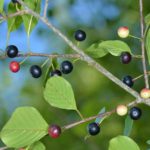
ALDER
Swamp-dweller, water-lover. The wood of this tough tree doesn’t rot when waterlogged, instead turning stronger and harder.
Information
- Common Name(s): alder, common alder, black alder, European alder
- Scientific name: Alnus glutinosa
- Conservation Status: Common
- Family: Betulaceae
- Origin: Native
ALDER FACTS
Alder (Alnus glutinosa) is the most common tree in wetland forests, and it improves soil fertility through its ability to fix nitrogen from the air.
NOT TO BE CONFUSED WITH:
Hazel (Corylus avellana)
The rounded leaf shapes are similar, however hazel leaves are lightly hairy rather than glossy like alder leaves.
ALDER STATISTICS
- Status:native deciduous tree
- Height:large (up to 35m)
- Girth:potentially to 5–6 metres
- Longevitypotential for long life (250+ years)
- DistributionWidespread.
Common alder can be found along riversides, and in fens and moist forests. Its exposed roots give shelter for fish, while its rounder leaves are food for water insects.
Mature trees, which are conical in shape, can reach a height of around 28m and survive for approximately 60 years.
The bark is black, fissured, and frequently coated in lichen. Twigs have a speckled light brown stem that turns crimson near the top. Young twigs are rough to the touch.
The Common Alder (Alnus glutinosa) is indigenous to the United Kingdom, Europe, Western Asia, and North Africa. It grows naturally in damp settings such as river banks and lake margins, but it is increasingly being planted in many metropolitan areas. Because it, like all Alders, can deliver nitrogen to the soil, it is often exploited on reclamation projects. The tree is comparable to two other Alders, the Grey Alder and the Italian Alder, both of which are planted in cities. Alder is identified by its notched leaf, male catkins, and female cone-like catkins that are intermediate in size between the other two.

